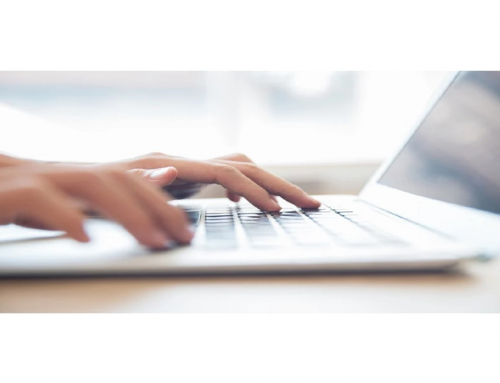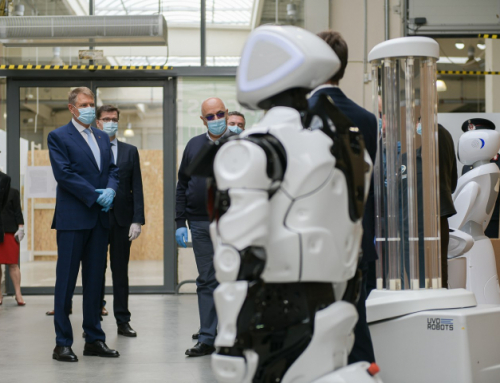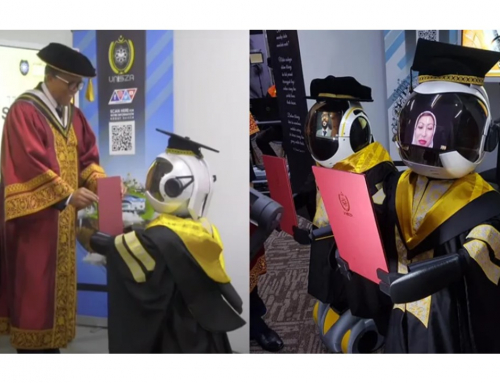
The library at UM offers a conducive ambience for all levels of students to fully utilise the books, journals and multimedia
A university library is an integral part of the institution as it brings together information or knowledge from various sources into one place.
It plays an important role in the support of, and participation, in teaching, learning and research activities in the university’s community.
For many years, a typical library is a place that houses materials like collection of books, periodicals, newspapers among others with services of librarians who are experts at finding and organising information and at interpreting information needs.
However, with the advancement of technology and digital resources, as well as students’ reading habits and their preferences, the functions of libraries have changed to fit users with current needs without compromising the number of library visits.
ROLES
Today, many students prefer to access electronic books (e-books) compared to the printed books. The reason for this is that e-books can easily be accessed and read on a computer and other electronic devices.
Leenawati Razali, Head Librarian at Taylor’s University, said the university’s library has seen the evidence in statistics of e-books usage which has increased to 154,568 in 2018, an increase in access by close to 20 per cent.
She said the academics, researchers and students are able to search and locate information from not only physical resources such as books but also through various online resources like online databases, e-books and e-journals.

Universiti Teknologi Petronas has a library and Information Resource Centre to accommodate its university fraternity and the public.
University of Nottingham Malaysia Head Librarian Ng Siew Ling said students are more comfortable to choose easy and instant access to information and e-resources, if possible, using mobile technology.
“They prefer electronic copy compared to printcopy. Our loan percentage of borrowing physical books had dropped about 15 to 20 percent for the past two to three years compared to ebooks.
A postgraduate in Master of Arts (Linguistics) Noor Rusydiah Abd Ghani, 28, said libraries should be accessible virtually, at any time, in which there should be a development of a system that allows users to browse through the available content online; on a mobile application for instance.
She said purchases of any materials could be made possible without having to be physically present to the library itself.
“I don’t read as much prints as I do with digitals. The factor of practically and portability is the main reason why digitals are the preferred choice when it comes to everyday reading. For those who are always on the go, it is quite a hassle having to carry a certain weight of books when you can actually fit everything inside one electronic device. Besides, digitals are usually cheaper than prints and they are easily shared,” she added.
Shamellya Norazizi, 22, also frequent the library due to high speed internet connection and comfortable places to discuss with team members about assignments and meetings.
The Bachelor in Finance student chose prints or online news as both medium helps her a lot in gathering the information.
“From my view, some people might have less time to read prints but are more comfortable using the new era of technology by getting information online.”
Brandon Quek Boon Lok, 21, frequent the university library, almost daily as he finds the atmosphere to be generally conducive, giving him a chance to visually inspect the material before perusal, and enjoying the palpability of physical books.
“For my studies, I make use of both print and non-print media and materials. I believe that the diversity of readable material does service for both the pursuit and transmission of knowledge,” said the International Relations undergraduate.
Student Zara Basyirah Md Shah, 20, said the role of library needs to change to meet the digital world’s requirement.
“Nowadays, the library does not only operate as a space to collect and borrow printed books. It should evolve into a space to allow users to have access to technology and as a source of digital literacy as well as printed books,” Zara said.
The Bachelor of Software Engineering (Hons) student said she still frequent the library for the discussion rooms to meet with her classmates for projects and as a place to practise presentations.
Bachelor of English Language and Linguistics student Nur Fatihah Noor Azhar Shah, 22, only goes to the library if there is a discussion with her friends or to borrow some books or read printed materials like newspapers only when she has time.
International Business & Marketing student Aizat Izzuan, 21, he chose to utilise the spaces within the library because it’s comfortable, quiet, cold and suitable for silent studying which allowed him to completely focus on his studies.
Electrical and electronic engineering student Shahidan Idris, 21, who reads printed materials such as books and magazines, said: “Today’s library must reshape itself to accommodate virtual reality learning and simulations as well as allocate activity areas for hands-on learning.”
FLEXIBLE LEARNING ENVIRONMENTS
Universiti Teknologi PETRONAS Information Resource Centre (UTP IRC) director Sabri Abu Bakar said for the past three years many efforts and activities have been introduced to improve user experience such as library outreach, structured user engagement sessions, new rules and regulations, space refurbishment and service enhancement.
“After these initiatives, we received positive comments from users, and the library utilisation statistics reflect this.”
Based on a UTP IRC survey, individual focus work is the dominant activity observed at its premises.
But collaborative group work also shows an increase in pattern in the evening.
“The library is a space for social points. Although there are improvements in user attendance, static books utilisation is a global trend.
“On the contrary, utilisation of e-resources has increased tremendously, reflecting the increase in research, reference and changing study habits,” Sabri added.
UTP IRC also provides extended services such as – Station 353 – a place where users can buy refreshments, have coffee breaks, snacks, relax and unwind for a moment after long hours of study, and Post Graduate Lounge is equipped with reading tables, sofa, computers, television and a massage chair.
Head Librarian Azman Hashim, said based on his observations, users come to the library not only to obtain information and make references but also to make libraries a recreation and social gathering.
“Although for the time being we are facing constraints in terms of space, but the library is full with visitors every day.”
In 2013, the UMK PPI has strengthened its basic functions and roles through the establishment of the Archives and Knowledge Management Division, Information Services Division and Publishing section.
This transformation has placed a new level in the library field in providing a new dimension in the governance and service of the academic library.
“In addition to information services and research support, the library provides effective records management and archives which are important components in the development of the university’s quality management system.”
Under the publishing section, UMK Press has produced quality scientific books and materials which not only reflect scholarship but also symbolise the university’s development as a centre of knowledge and key reference for entrepreneurship.
At University of Nottingham Malaysia, the library offers a variety of study environments from flexible learning spaces for groups to silent areas for individual study and research.
Its reading lists embedded into an e-learning system (Moodle) links students to resources in the library.
Acting Universiti Malaya chief librarian Mahbob Yusof said there were some 828,350 physical visits to the central library on its main campus. Students favour e-resources but go to the library not only for reference purposes but also to study, collaborate, work on presentations and other learning activities.
Leenawati said the library at Taylor’s University is looking into providing sufficient learning spaces such as individual and group study areas, and a theatrette, which comes with individual plug points to enable charging of devices.
“The library equips students with the research skills, information and digital literacy skills they need to be at the cutting edge of their discipline and to be influential digital users.
“We offer information literacy classes to students from all schools and for all levels from pre-university to postgraduate studies. As at last year, 168 classes were conducted, with a total of 3,499 students in attendance.”
NEW LANDSCAPE
In the era of the Industrial Revolution 4.0, the library needs a paradigm shift of roles, functions and services.
The hybrid concept at UMK combines the physical and digital libraries offering access to digital materials at the outset.
“Online database subscriptions have been implemented to ensure access to quality scientific materials. More than 2.1 million collection of electronic reference material can be accessed through the platform,” said Azman.
“We are always in touch with other libraries to identify improvements we can implement, especially technology use.
“We actively seek to work with partners to organise innovative activities such as the Young Maker Challenge, Young Innovator Challenge, workshops and programmes at the library.
“New buildings in Bachok and Jeli will be fully completed this year. We hope students will fully utilise the digital library facilities to enhance soft skills.”
Ng agrees the library needs to evolve in line with technology, especially mobile.
“An ideal library puts users at the heart of everything. Good collaboration with academics will enable the library to offer a connected and interactive environment to support teaching and learning.
“The library isacentre of information for the university community. It aims to meet the needs of our learners, teachers and researchers.
“As an example, we provide inter-library loans if we do not have the items requested,” she added.
Since its establishment in 1997, UTP IRC has steadily improved access to its collection. To stay relevant, the university follow trends in the current technological and educational environments as change is continual.
“We have purchased and subscribed to e-books and ejournals. We have also digitised the university’s intellectual assets such as theses, dissertations, examination question papers and final-year project reports. These digital content is accessible 24/7,” said Sabri.
Taylor’s University library has more digital content than physical books. “There are 694,049 titles of e-books compared to 99,727 volumes of printed books. The number of ebooks increased by 234 per cent last year,” said Leenawati.
University of Nottingham Malaysia has a digitalised library with e-resources, i.e. e-journals, e-books, e-dissertations and etheses, for example.
“However, we don’t digitise our physical books,” said Ng.
Acting Universiti Sains Islam Malaysia (USIM) chief librarian Nor Azzah Momin said that although the concept of a library needs to include additional spaces for discussions, other elements such as silent spaces for readers need to be maintained.
“We provide digital content such as ebooks and subscribed database online, which offers a platform for its institutional repository called ‘elmtiyaz’ where content is freely accessed by the public.
“As of now, we have 13,653 digitised collections.”
Mahbob said the library at UM hopes to provide the best services in the most effective and efficient manner by anticipating and responding to changing needs and leveraging on technologies.
“We are committed to creating an inviting environmentthat supports research,teaching, learning, innovation and collaboration.
“As new teaching methods are introduced with increased group work sessions and the application of the flipped classroom, the library has to accommodate these needs by evaluating learning spaces within it.
“UM has spent substantial funds on refurbishment and rejuvenation in line with the very function of the academic library of the 21st century.”
He added that access to electronic resources aremade available through the library portal and can be used by students from anywhere in the world with Internet connection.
“The library has also set up open access repositories to increase the visibility of its research output. Due to copyright law, the feasibility of digitising physical books has to be studied carefully.
“However, we are actively digitising local content which belongs to the university, for example our theses are available online via institutional repositories.
“In this digital age, information and communications technology developments have influenced learning and teaching, research and the whole environment within the university.
“In line with the new learning landscape, the library should be perceived as a centre of learning, discovery and discourse between students, faculty, staff and the wider community.”
Leenawati added the library at Taylor University’s has resources on multidisciplinary subjects.
“We subscribed to our current online databases as we found them especially conducive for university-level research as they are equipped with resources in various formats relevant to disciplines such as biosciences, architecture and design, business studies, communications, computing and information technology, education, engineering, hospitality and tourism, law, medicine, pharmacy and quantity surveying.”
Source: https://www.nst.com.my/education/2019/03/473307/ideal-library-heart-everything






